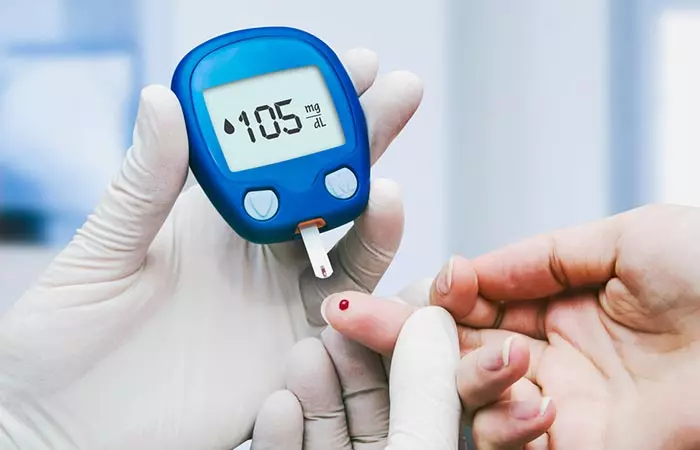This gas influences blood flow, breathing, hemostasis (prevention of bleeding), neurotransmissioni Communication by chemicals, called neurotransmitters, from neurons to muscles or between different neurons. , and the immune system (2). However, inhaling nitric oxide can have systemic effects, leading to dizziness or lightheadedness. In addition, the respiratory tracts, the skin, and the eyes may be irritated. Nitric oxide is a volatile gas, and as soon as it comes into contact with air, it transforms into nitrogen dioxide. This article examines the side effects of nitric oxide, the symptoms it produces, its safety, and the recommended dosage. Take a look below.
Side Effects Of Nitric Oxide
Nitric oxide inhalation can cause confusion, headache, fatigue, sweating, and lethargy (3). Let us discuss the more common side effects of nitric oxide in detail. Long-Term Effects Blindness, weakened immune system, memory loss, brain and nerve damage, limb spasms, birth defects in the offspring, reproductive system damage, depression, and psychosis. Drug Interactions Interacts with anesthetics, psychoactive drugs, and alcohol, and amplifies their effects. When To See A Doctor Since these are subscription supplements, consult a doctor at the first signs of any discomfort.
1. May Cause Blurred Vision
High concentrations of nitric oxide can cause irritation in the eyes. Prolonged exposure can cause blurred vision. In extreme cases, it may even cause blindness (4).
2. May Cause Respiratory Ailments
Even low concentrations of nitric oxide can irritate the lungs and the respiratory tract. The initial symptoms of nitric oxide inhalation include cough and difficulty with breathing. Prolonged exposure can cause spasms in the lungs and pulmonary edema (5). Inhaled nitric oxide, in higher concentrations, can be quite fatal. Symptoms may include burns, airway obstruction due to swelling of tissues, respiratory distress, and even death. Elevated levels of endogenous nitric oxide in cells is a sign of oxidative stress. Though the status of NO has not been established, there have been reports stating that NO could be involved in acute lung injury (6). The effects of nitric oxide on adult lung disease are unclear (7).
3. May Have Hematologic Effects
Patients with sepsis have a higher risk of side effects due to nitric oxide. The bodies of such patients release large quantities of nitric oxide. The NO is converted to methemoglobin and nitrate, eventually resulting in methemoglobinemia (8). Methemoglobinemia is a condition in which the iron in hemoglobin is oxidized. This impairs oxygen transport and leads to cyanosis (a condition characterized by inadequate oxygen in the blood, also known as hypoxia) (8).
4. May Lead To Metabolic Disorders
Higher concentrations of nitric oxide are associated with metabolic disorders, such as diabetes and cardiovascular disease (9). Patients with hyperglycemia (or high blood sugar) have elevated levels of nitric oxide. Studies have linked high NO levels to endothelial dysfunction and cardiovascular disease (9).
5. May Cause Arterial Stiffness
Inhaled nitric oxide is a vasodilatori Drugs that dilate blood vessels and allow the body’s various organs to receive more blood. and can modulate blood pressure. Impaired nitric oxide has been associated with arterial stiffness, a major cause of hypertension (10). High blood pressure can cause pulmonary hypertension, where blood flow in the blood vessels is impaired. This increases the risk of other metabolic disorders, such as diabetes and heart failure (10).
6. May Cause Nausea, Vomiting, And Diarrhea
Overdose of nitric oxide supplements can cause stomach problems, like diarrhea, nausea, and vomiting. It can cause gastric burns in extreme cases (11).
7. May Cause Vasodilation And Bleeding
Nitric oxide can disrupt pulmonary circulation. It can cause excessive bleeding and low blood pressure. Those on heart medications should consult their physician before using nitric oxide products. Nitric oxide synthase inhibits bleeding time. Overdose of NO may also cause side effects associated with the kidneys, including blood in the urine (hematuria) (12).
8. May Cause Cardiovascular Issues
Inhaling nitric oxide can be fatal to heart health. The role of nitric oxide as a vasodilatori Drugs that dilate blood vessels and allow the body’s various organs to receive more blood. has been extensively studied. However, it may cause adverse effects, such as reduced pulse, dilated heart, and cardiac dysfunction (13). Research has also found that elevated levels of NO can lead to cardiac failure (14).
9. May Cause Electrolyte Imbalance
Excess nitric oxide in the body can lead to high levels of creatinine and urea (15). This may be particularly harmful to people with liver or kidney disorders as it may hinder the blood purification process. In severe cases, it can lead to liver damage or renal failure too. These are some of the side effects of nitric oxide. It may also lead to other side effects like sepsis, infection, dyspneai Uncomfortable breathing or a feeling of not getting enough air into your lungs due to tightening of the chest. , cellulitis, and headaches (16). Keep reading to know the symptoms of nitric oxide overdose.
Symptoms Of Overdose
Exposure to high levels of nitric oxide may elicit an immediate response, such as abdominal pain, headache, heartburn, palpitations, nausea, vomiting, bloating, and diarrhea. Sometimes, there are no symptoms for 24 hours. After that, symptoms such as lethargy, confusion, anxiety, swelling in the lungs, or loss of consciousness have been observed (11). As per anecdotal evidence, other symptoms of overdose could be dark-colored urine, rapid heartbeat, fever, headaches, sore throat, unusual bleeding, or bruising. The skin might turn pale and other parts, such as the lips and fingernails, may turn blue. Thus, it is important to talk to a healthcare professional before starting nitric oxide supplementation. They can help you figure out the appropriate dosage for your needs, especially if you have any health problems or take medications.
What Is A High Nitric Oxide Level?
The legal limit for NO occupational exposure is 25 parts per million (ppm). Anything higher than that can be toxic (17).
How Much Nitric Oxide Should You Take?
The recommended dose is 20 ppm. Our cells are capable of producing endogenous nitric oxide to suit the requirements of the body. However, you can add NO naturally by consuming nitrate rich vegetables, such as lettuce, celery, beetroot, and spinach. Consuming vitamins and antioxidants, such as vitamin C and glutathione, also helps in boosting NO levels in the body. Consuming oral supplements, such as L-Arginine and L-citrulline, also increases NO. Can nitric oxide supplements cause any long-term effects? Discover nitric oxide, how it may help, and its short-term and long-term side effects in the infographic below.Illustration: StyleCraze Design Team Yes. While short-term use may be generally safe, prolonged use can lead to side effects or overdose symptoms such as headaches, low blood pressure, and digestive issues (11). So, consult with a healthcare professional before starting any nitric oxide supplementation to assess individual risks and benefits. Does nitric oxide cause brain damage? Research on the role of nitric oxide on the brain is not clear. More studies are warranted to understand the role of nitric oxide in this aspect. How do you test for nitric oxide levels? There are specific medical tests available. Diagnostic tools such as pH strips can also be used to test for nitric oxide levels. Does nitric oxide cause muscle pain? There is currently very little research on the effect of nitric oxide on muscle soreness. A study suggests that nitric oxide may activate certain receptors that cause a pain sensation (18). However, further studies are needed to understand the effect of nitric oxide on muscle soreness. Does nitric oxide increase urination? According to research, inhaling nitric oxide can directly increase the volume of urination (19). However, more studies are required to understand the effect of nitric oxide intake in the form of a supplement.
Illustration: Major Side Effects Of Nitric Oxide And Symptoms Of Overdose












